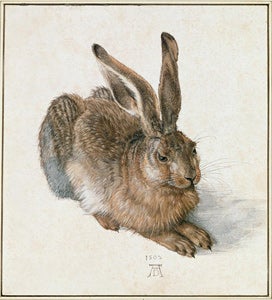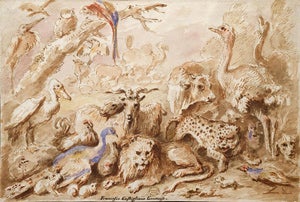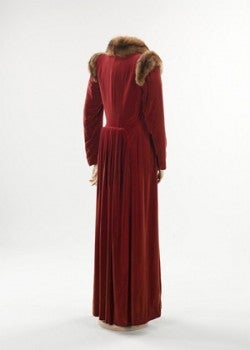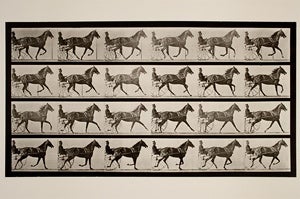Case study: Picturing Animals
Keri Cronin
Department of Visual Arts faculty, Brock University

Albrecht Dürer, Hare (A Young Hare), 1502. Source Image and original data prErich Lessing Culture and Fine Arts Archivesovided by /ART RESOURCE, N.Y. artres.com
In January 2011 I launched a new senior-level undergraduate course called “Picturing Animals.” This is a research-intensive course that explores the history of visual culture through a thematic focus on representations of nonhuman animals. From Albrecht Dürer to Damien Hirst, we take a critical look at how and why artists have chosen to represent the animal body at various points in human history. Through discussions, readings and presentations we then situate these art histories in a broader visual context by considering other related instances in which the animal body plays a dominant visual role, including science, natural history, religion, animal welfare activism, the entertainment industry, and fashion.
I often draw on Artstor in preparation for these classes, as the range of images available in this database is broad and interdisciplinary. For this class I need to go beyond “Fine Art”-type images and this is where I find Artstor to be particularly useful. In addition to Landseer, Bonheur, Stubbs and other famous animal painters, I can also find editorial cartoons, tapestries, circus posters and scientific images in Artstor. It is easy to bring these different kinds of images together for critical analysis and discussion using image groups and folders.
One particularly interesting set of discussions we have had in this course is the use of the animal body as a component in the production of art and visual culture. Here, for example, we contrast the ways in which artists like Damien Hirst or Mark Dion incorporate animal bodies directly into their works with the history of animal bodies in artists’ materials (e.g.: dyes and pigments derived from cochineal insects). For this class I was delighted to find examples of clothing dyed with cochineal in the Artstor database.
In another instance we looked at the historical differences (and similarities!) that exist in the use of imagery by animal welfare/rights activists. We looked, for instance, at the ways in which groups such as the Victoria Street Society for the Protection of Animals from Vivisection or the Massachusetts SPCA recontextualized such well-known images as Sir Edwin Landseer’s A Distinguished Member of the Humane Society. In that same discussion, we analyzed some of the recent photographic campaigns produced by PETA.
One of the major assignments in this course is a 20 page research paper on some aspect of “Picturing Animals.” The students in the inaugural run of this course have done a phenomenal job of coming up with diverse research topics reflective of course themes. In many instances, the students were able to develop their topic through exploring imagery in Artstor, taking, for example, a term or an image from class discussions and using that as a keyword in the database to find related material.
In short, Artstor is a valuable tool for interdisciplinary courses because of both the range of material available in the database and the functionality of such features as “Advanced Search” and the ability to make image groups.




